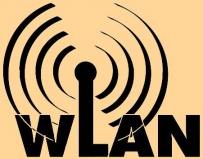WLAN: Unterschied zwischen den Versionen
Aus Zebradem WIKI
Zur Navigation springenZur Suche springen
Keine Bearbeitungszusammenfassung |
Keine Bearbeitungszusammenfassung |
||
| Zeile 1: | Zeile 1: | ||
<div style="margin: 0; margin-top:10px; margin-right:10px; border: 1px solid #333333; padding: 0em 1em 1em 1em; background-color:#1B1C2D; align:right;"> | <div style="margin: 0; margin-top:10px; margin-right:10px; border: 1px solid #333333; padding: 0em 1em 1em 1em; background-color:#1B1C2D; align:right;"><br><center>[[Image:ZD-Logo.png]]</center> <center><big><span style="color:#B5B5B5;">'''''Das Board mit Freiheiten'''''</span></big></center> | ||
<br><center>[[ | <font color="white"></font> | ||
<center><big><span style="color:#B5B5B5;">'''''Das Board mit Freiheiten'''''</span></big></center> | |||
<font color=white></font> | |||
---- | ---- | ||
<br> | |||
<br> | |||
<div style="margin: 0px 20px 15pt 15pt; border: 2px solid rgb(223, 223, 223); padding: 0em 1em 1em; background-color:#303140; border: 1px solid #000000;"> | <div style="margin: 0px 20px 15pt 15pt; border: 2px solid rgb(223, 223, 223); padding: 0em 1em 1em; background-color:#303140; border: 1px solid #000000;"> | ||
<br | <br> | ||
[[Image:Wlan-logo.jpg|thumb|left|203x159px]]<br> | |||
'''WLAN''' steht für Wireless Local Area Network, also ein drahtloses lokales Netzwerk, oder kurz: Funknetz, überlicherweise nach dem IEEE-Standard 802.11. | '''WLAN''' steht für Wireless Local Area Network, also ein drahtloses lokales Netzwerk, oder kurz: Funknetz, überlicherweise nach dem IEEE-Standard 802.11. | ||
Der Standard umfasst mittlerweile eine Reihe Weiterentwicklungen, die jeweils mit einem Buchstaben gekennzeichnet werden. Nennenswert ist dabei die maximal mögliche Übertragungsgeschwindigkeit: | |||
{| | {| | ||
|- | |||
| IEEE 802.11: | |||
| 2 Mbps maximal | |||
|- | |||
| IEEE 802.11a: | |||
| 54 Mbps maximal (108 Mbps bei 40 MHz Bandbreite, jedoch herstellerspezifisch; Frequenzband: 5 GHz) | |||
|- | |||
| IEEE 802.11b: | |||
| 11 Mbps maximal (22 Mbps bei 40 MHz und 44 Mbps bei 60 MHz Bandbreite, jedoch herstellerspezifisch; Frequenzband: 2,4 GHz) | |||
|- | |||
| IEEE 802.11g: | |||
| 54 Mbps maximal (g+ =108 Mbps, jedoch herstellerspezifisch bis 125 Mbps möglich; Frequenzband: 2,4 GHz) | |||
|- | |||
| IEEE 802.11h: | |||
| 54 Mbps maximal (108 Mbps bei 40 MHz Bandbreite) | |||
|- | |||
| IEEE 802.11n: | |||
| 300 Mbps maximal (1. Entwurf 2006, 2. Entwurf 2007; Frequenzband: 2,4 GHz, auch 5 GHz als optionales Band) | |||
|} | |||
<br> | |||
== Quellenangaben == | == Quellenangaben == | ||
http://de.wikipedia.org/wiki/ | |||
http://de.wikipedia.org/wiki/ | |||
== Wichtige Links == | == Wichtige Links == | ||
*[[FRITZ!Box|Zurück zu Fritzbox]] | |||
*[[/wiki/index.php?title=FRITZ!Box|Zurück zu Fritzbox]] | |||
*[[Hauptseite|Zurück zu Hauptseite]] | *[[Hauptseite|Zurück zu Hauptseite]] | ||
</div> </div> | |||
[[Category:Fritzbox]] [[Category:Netzwerk]] | [[Category:Fritzbox]] [[Category:Netzwerk]] | ||
Version vom 4. April 2011, 17:19 Uhr


WLAN steht für Wireless Local Area Network, also ein drahtloses lokales Netzwerk, oder kurz: Funknetz, überlicherweise nach dem IEEE-Standard 802.11.
Der Standard umfasst mittlerweile eine Reihe Weiterentwicklungen, die jeweils mit einem Buchstaben gekennzeichnet werden. Nennenswert ist dabei die maximal mögliche Übertragungsgeschwindigkeit:
| IEEE 802.11: | 2 Mbps maximal |
| IEEE 802.11a: | 54 Mbps maximal (108 Mbps bei 40 MHz Bandbreite, jedoch herstellerspezifisch; Frequenzband: 5 GHz) |
| IEEE 802.11b: | 11 Mbps maximal (22 Mbps bei 40 MHz und 44 Mbps bei 60 MHz Bandbreite, jedoch herstellerspezifisch; Frequenzband: 2,4 GHz) |
| IEEE 802.11g: | 54 Mbps maximal (g+ =108 Mbps, jedoch herstellerspezifisch bis 125 Mbps möglich; Frequenzband: 2,4 GHz) |
| IEEE 802.11h: | 54 Mbps maximal (108 Mbps bei 40 MHz Bandbreite) |
| IEEE 802.11n: | 300 Mbps maximal (1. Entwurf 2006, 2. Entwurf 2007; Frequenzband: 2,4 GHz, auch 5 GHz als optionales Band) |